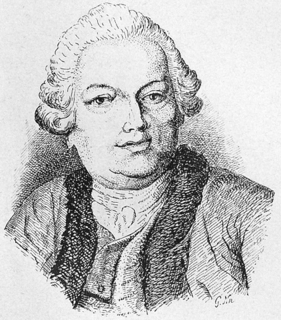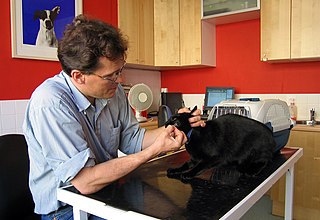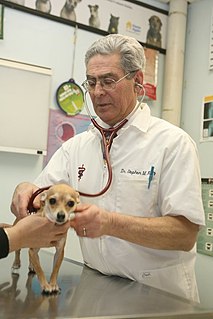2001 Veterinary Medicine Canine Cataracts a Review Review of Diagnostic and Treatment Procedures
Veterinarian medicine
Concluding updated
Veterinary medicine is the branch of medicine that deals with the prevention, control, diagnosis, and handling of disease, disorder, and injury in animals. Forth with this, it deals with animal rearing, husbandry, breeding, research on diet, and product evolution. The scope of veterinary medicine is wide, roofing all animal species, both domesticated and wild, with a broad range of conditions that can affect different species.
- History
- Premodern era
- Establishment of profession
- Veterinary workers
- Veterinarian physicians
- Paraveterinary workers
- Allied professions
- Veterinary inquiry
- Clinical veterinary research
- See as well
- By land
- References
- Further reading
- Introductory textbooks and references
- Monographs and other speciality texts
- Veterinary nursing, ophthalmology, and pharmacology
- Related fields
- External links
Veterinarian medicine is widely practiced, both with and without professional person supervision. Professional care is most frequently led by a veterinary doctor (as well known as a veterinarian, veterinary surgeon, or "vet"), merely besides by paraveterinary workers, such as veterinary nurses or technicians. This can be augmented by other paraprofessionals with specific specialties, such every bit fauna physiotherapy or dentistry, and species-relevant roles such every bit farriers.
Veterinary science helps human health through the monitoring and control of zoonotic disease (infectious illness transmitted from nonhuman animals to humans), food prophylactic, and through human applications via medical enquiry. They also assist to maintain food supply through livestock health monitoring and treatment, and mental wellness by keeping pets healthy and long-living. Veterinary scientists often interact with epidemiologists and other wellness or natural scientists, depending on type of work. Ethically, veterinarians are commonly obliged to look after animal welfare. Veterinarians diagnose, care for, and assistance go on animals safety and healthy.
History
Premodern era
Archeological prove, in the form of a moo-cow skull upon which trepanation had been performed, shows that people were performing veterinary procedures in the Neolithic (3400–3000 BCE). [1]

The Egyptian Papyrus of Kahun (12th Dynasty of Egypt) is the first extant record of veterinary medicine. [2]
The Shalihotra Samhita , dating from the time of Ashoka, is an early Indian veterinary treatise. The edicts of Asoka read: "Everywhere King Piyadasi (Asoka) made 2 kinds of medicine (चिकित्सा) available, medicine for people, and medicine for animals. Where no healing herbs for people and animals were available, he ordered that they be bought and planted." [iii]

Hippiatrica is a Byzantine compilation of hippiatrics, dated to the fifth or sixthth century AD. [four]
The first attempts to organize and regulate the practice of treating animals tended to focus on horses because of their economic significance. In the Center Ages, farriers combined their piece of work in horseshoeing with the more general task of "horse doctoring". The Arabic tradition of Bayṭara , or Shiyāt al-Khayl, originates with the treatise of Ibn Akhī Hizām (fl. belatedly 9th century).
In 1356, the Lord Mayor of London, concerned at the poor standard of care given to horses in the city, requested that all farriers operating within a seven-mile (eleven-km) radius of the Metropolis of London form a "fellowship" to regulate and improve their practices. This ultimately led to the establishment of the Worshipful Company of Farriers in 1674. [5]
Meanwhile, Carlo Ruini'due south volume Anatomia del Cavallo, (Anatomy of the Horse) was published in 1598. It was the first comprehensive treatise on the anatomy of a nonhuman species. [6]
Establishment of profession

The first veterinary schoolhouse was founded in Lyon, France, in 1762 by Claude Bourgelat. [7] According to Lupton, [8] afterwards observing the destruction being acquired by cattle plague to the French herds, Bourgelat devoted his time to seeking out a remedy. This resulted in his founding a veterinary school in Lyon in 1761, from which establishment he dispatched students to combat the affliction; in a short time, the plague was stayed and the wellness of stock restored, through the aid rendered to agriculture by veterinary science and art. [8] The school received immediate international recognition in the 18th century and its pedagogical model drew on the existing fields of human medicine, natural history, and comparative anatomy. [9]
The Odiham Agricultural Society was founded in 1783 in England to promote agriculture and industry, [ten] and played an important function in the foundation of the veterinary profession in United kingdom of great britain and northern ireland. A founding member, Thomas Burgess, began to take up the crusade of brute welfare and campaign for the more humane treatment of sick animals. [11] A 1785 society coming together resolved to "promote the study of Farriery upon rational scientific principles."
Doctor James Clark wrote a treatise entitled Prevention of Affliction in which he argued for the professionalization of the veterinary merchandise, and the establishment of veterinary colleges. This was finally achieved in 1790, through the campaigning of Granville Penn, who persuaded Frenchman Benoit Vial de St. Bel to accept the professorship of the newly established veterinarian college in London. [10] The Royal College of Veterinary Surgeons was established by royal charter in 1844. Veterinarian science came of age in the late 19th century, with notable contributions from Sir John McFadyean, credited by many as having been the founder of modernistic veterinary research. [12]
In the United States, the first schools were established in the early on 19th century in Boston, New York City, and Philadelphia. In 1879, Iowa Agronomical College became the first land-grant college to establish a schoolhouse of veterinarian medicine. [thirteen]
Veterinary workers
Veterinary physicians

Veterinarian intendance and management are commonly led by a veterinary physician (normally called a veterinarian, veterinary surgeon or "vet" - doctor of veterinary medicine or veterinary medical doctor). This role is the equivalent of a physician or surgeon (medical doctor) in human medicine, and involves postgraduate study and qualification.
In many countries, the local nomenclature for a vet is a protected term, meaning that people without the prerequisite qualifications and/or registration are not able to apply the title, and in many cases, the activities that may be undertaken by a vet (such as fauna treatment or surgery) are restricted but to those people who are registered as vet. For instance, in the United Kingdom, every bit in other jurisdictions, creature handling may be performed only by registered vets (with a few designated exceptions, such as paraveterinary workers), and any persons calling themselves a vet without beingness registered or performing any treatment is illegal.
Near vets work in clinical settings, treating animals directly. They may be involved in a full general do, treating animals of all types; may be specialized in a specific group of animals such equally companion animals, livestock, laboratory animals, zoo animals, or horses; or may specialize in a narrow medical subject field such as veterinary surgery, dermatology, cardiology, neurology, laboratory animal medicine, internal medicine, and more.
As with healthcare professionals, vets face upstanding decisions well-nigh the care of their patients. Current debates within the profession include the ethics of purely cosmetic procedures on animals, such every bit declawing of cats, docking of tails, cropping of ears, and debarking on dogs.
A wide range of surgeries and operations is performed on various types of animals, just not all of them are carried out by vets. In a case in Iran, for instance, an eye surgeon managed to perform a successful cataract surgery on a rooster for the beginning time in the world. [14]
Paraveterinary workers

Paraveterinary workers, including veterinarian nurses, technicians, and assistants, either assistance vets in their work, or may work inside their own scope of practise, depending on skills and qualifications, including in some cases, performing pocket-sized surgery.
The role of paraveterinary workers is less homogeneous globally than that of a vet, and qualification levels, and the associated skill mix, vary widely.
Allied professions
A number of professions exist within the scope of veterinary medicine, but may not necessarily be performed by vets or veterinary nurses. This includes those performing roles which are besides found in human medicine, such equally practitioners dealing with musculoskeletal disorders, including osteopaths, chiropractors, and physiotherapists.
Some roles are specific to animals, but which take parallels in human social club, such as animal preparation and fauna massage. Some roles are specific to a species or group of animals, such as farriers, who are involved in the shoeing of horses, and in many cases accept a major function to play in ensuring the medical fettle of horses.
Veterinary research

Veterinary inquiry includes prevention, control, diagnosis, and treatment of diseases of animals, and basic biology, welfare, and care of animals. Veterinary inquiry transcends species boundaries and includes the study of spontaneously occurring and experimentally induced models of both man and animal diseases and enquiry at human-animal interfaces, such as food condom, wildlife and ecosystem health, zoonotic diseases, and public policy. [xv]
Clinical veterinary research
Every bit in medicine, randomized controlled trials besides are cardinal in veterinary medicine to establish the effectiveness of a treatment. [16] Clinical veterinary research is far behind homo medical research, though, with fewer randomized controlled trials, that take a lower quality and are by and large focused on enquiry animals. [17] Possible improvement consists in creation of networks for inclusion of private veterinary practices in randomized controlled trials.
No studies exist on the issue of community brute health services on improving household wealth and the health status of depression-income farmers. [eighteen]
Meet also
- Beast drug
- Animal scientific discipline
- Federation of Veterinarians of Europe
- Lists of animal diseases
- National Function of Animate being Health
- One Health
- Pet orthotics
- Technology in veterinary medicine
- WikiVet
By country
- Veterinary medicine in the United Kingdom
- Veterinary medicine in the U.s.
- History of veterinary medicine in Pennsylvania
- History of veterinary medicine in the Philippines
- Veterinary Council of Bharat
- Veterinary Council of Ireland
Related Research Articles

A veterinarian (vet), besides known as a veterinary surgeon or veterinary medico, is a medical professional who practices veterinary medicine but is not a scientist. They manage reproductive health and injuries in non-homo animals. Along with this, vets also play vital role in animal reproduction, animal health management emphasizing on animal reproductive health, conservation, breeding, and preventive medicine similar animal nutrition and bio security.

A farrier is a specialist in equine hoof intendance, including the trimming and balancing of horses' hooves and the placing of shoes on their hooves, if necessary. A farrier combines some blacksmith's skills with some veterinary's skills to care for horses' anxiety.

Acepromazine, acetopromazine, or acetylpromazine is a phenothiazine derivative antipsychotic drug. Information technology was used in humans during the 1950s as an antipsychotic, only is now almost exclusively used on animals as a allaying and antiemetic. Its closely related analogue, chlorpromazine, is still used as an antipsychotic in humans. Acepromazine is used primarily as a chemic restraint in hyperactive or fractious animals.
The Virginia–Maryland College of Veterinary Medicine is a state-supported college of two states, Virginia and Maryland, filling the need for veterinarian medicine education in both states. Students from both states are considered "in-country" students for admissions purposes.

Claude Bourgelat was a French veterinary surgeon. He was a founder of scientifically informed veterinarian medicine, and he created one of the primeval schools for training professional veterinarians.

Veterinarian surgery is surgery performed on animals past veterinarians, whereby the procedures fall into three broad categories: orthopaedics, soft tissue surgery, and neurosurgery. Avant-garde surgical procedures such equally joint replacement, fracture repair, stabilization of cranial cruciate ligament deficiency, oncologic (cancer) surgery, herniated disc treatment, complicated gastrointestinal or urogenital procedures, kidney transplant, peel grafts, complicated wound management, and minimally invasive procedures are performed by veterinary surgeons. Almost general do veterinarians perform routine surgeries such as neuters and modest mass excisions; some also perform additional procedures.

Promazine, is used as a short-term improver handling for psychomotor agitation. Its approved uses in people is limited, simply is used as a tranquilizer in veterinary medicine. It has weak antipsychotic furnishings but is more often than not not used to treat psychoses.
Equine podiatry is the study and management of the equine foot based on its anatomy and role.

Veterinary acupuncture is a form of traditional Chinese medicine and a pseudoscientific do of performing acupuncture on animals. The all-time studies of the furnishings of beast acupuncture accept produced consistently negative results.

Veterinarian oncology is a subspecialty of veterinary medicine that deals with cancer diagnosis and treatment in animals. Cancer is a major cause of expiry in pet animals. In one written report, 45% of the dogs that reached ten years of age or older died of cancer.

Bernard Elliot Rollin was an American philosopher, who was emeritus professor of philosophy, animal sciences, and biomedical sciences at Colorado State University. He was considered to be the "father of veterinary medical ethics".

Veterinary chiropractic, also known equally beast chiropractic, is the practice of spinal manipulation or transmission therapy for animals. Veterinary chiropractors typically treat horses, racing greyhounds, and pets. Veterinary chiropractic is a fast-developing field that is complementary to the conventional approach.
The Faculty of Veterinarian Scientific discipline is a faculty of the University of Pretoria. Founded in 1920, it is the second oldest veterinarian faculty in Africa. With the exception of the faculties in Khartoum, and Cairo, all the other African faculties were established after 1960. Information technology is the only one of its kind in South Africa and is i of 33 veterinary faculties in Africa.

Paraveterinary worker is the professional of veterinarian science that performs procedures autonomously or semi apart, as part of a veterinarian assist organization. The job role varies throughout the earth, and mutual titles include veterinarian nurse, veterinary technician and veterinary assistant, and variants with the prefix of 'animal health'.

Veterinary medicine in the United Kingdom is the functioning of veterinarian medicine by licensed professionals. It is strictly regulated by the statute police, notably the Veterinary Surgeons Act 1966. Veterinary medicine is led past veterinary physicians, termed 'veterinarian surgeons', normally referred to as 'vets'.

Veterinary medicine in the United States is the performance of veterinary medicine in the United States, normally performed by licensed professionals, and subject to provisions of statute law which vary by country. Veterinary medicine is commonly led by veterinary physicians, termed veterinarians or vets.
Greg J. Harrison is an avian (bird) veterinarian who is noted for having established the US' first all-bird clinic, The Bird Infirmary in Lake Worth, FL. He later was a founder of the company HBD International, Inc. which manufactures the product line Harrison'southward Bird Foods. Harrison also was a main correspondent and editor of several of the field's earliest and most well-known texts including, Avian Medicine: Principles and Applications and Clinical Avian Medicine. and the Avian Veterinary Compendium.
The Canadian Veterinary Medical Association (CVMA), founded in 1876, provides leadership on national veterinary issues, advocates for animal welfare, and works to encourage life balance in veterinary professionals.
Zoobiquity is a 2012 non-fiction science book co-written by the cardiologist Barbara Natterson-Horowitz and Kathryn Bowers. It was a New York Times Bestseller.
Feline cognitive dysfunction (FCD) is a cognitive disease prevalent in cats, directly related to the brain crumbling, leading to changes in awareness, deficits in learning and memory, and decreased responsiveness to stimuli. It is also known as cognitive dysfunction syndrome (CDS). Alzheimer'due south affliction and dementia in humans are diseases with comparable symptoms and pathology.
References
- ↑ Ramirez Rozzi, Fernando; Froment, Alain (xix April 2018). "Earliest Animal Cranial Surgery: from Cow to Man in the Neolithic". Scientific Reports. 8 (1): 5536. Bibcode:2018NatSR...8.5536R. doi:x.1038/s41598-018-23914-1. PMC 5908843 . PMID 29674628.
- ↑ Thrusfield 2007, p.ii.
- ↑ Finger 2001, p.12.
- ↑ Scarborough, John; Cutler, Anthony (i Jan 2005), "Hippiatrica", The Oxford Dictionary of Byzantium, Oxford University Printing, doi:10.1093/acref/9780195046526.001.0001, ISBN 9780195046526 , retrieved 27 September 2019
- ↑ Hunter, Pamela (2004). Veterinary Medicine: A Guide to Historical Sources, p. 1. Ashgate Publishing, Ltd.
- ↑ Wernham, R. B. (1968). The New Cambridge Mod History: The Counter-Reformation and toll revolution, 1559–1610, Volume iii, p. 472. Cambridge Academy Printing.
- ↑ Marc Mammerickx, Claude Bourgelat: avocat des vétérinaires, Bruxelles 1971
- ane 2 J.L.Lupton, "Modernistic Practical Farriery", 1879, in the section: "The Diseases of Cattle Sheep and Pigs" pp.1
- ↑ Heintzman, Kit (2018). "A cabinet of the ordinary: domesticating veterinary teaching, 1766–1799". The British Journal for the History of Scientific discipline. 51 (two): 239–260. doi:10.1017/S0007087418000274. PMID 29665887.
- 1 2 Pugh, 50.P (1962), From Farriery to Veterinary Medicine 1785–1795, Heffner, Cambridge (for RCVS), pp.viii–nineteen
- ↑ Cotchen, Ernest (1990), The Royal Veterinary College London, A Bicentenary History, Barracuda Books Ltd, pp.11–xiii
- ↑ Exacting researcher brought profession into modernistic age, American Veterinary Medical Clan
- ↑ Widder, Keith R. (2005). Michigan Agronomical College: The Evolution Of A Land-Grant Philosophy, 1855–1925, p. 107. MSU Printing
- ↑ "Rooster Undergoes Globe'southward Offset Cataract Surgery". IFPNews.com. 22 Apr 2018.
- ↑ National Research Council, (US) Committee on the National Needs for Enquiry in Veterinarian Science (2005). Critical Needs for Research in Veterinary Science. Washington (DC): National Academies Press (U.s.a.).
- ↑ Sargeant, JM (2010). "Quality of reporting of clinical trials of dogs and cats and associations with treatment effects". Journal of Veterinary Internal Medicine. 24 (i): 44–50. doi: ten.1111/j.1939-1676.2009.0386.x . PMID 19807866.
- ↑ Di Girolamo, N (2016). "Deficiencies of effectiveness of intervention studies in veterinary medicine: a cantankerous-sectional survey of ten leading veterinary and medical journals". PeerJ. iv: e1649. doi:10.7717/peerj.1649. PMC 4734056 . PMID 26835187.
- ↑ Martin Curran, Marina; MacLehose, Harriet (19 Apr 2006). Cochrane Infectious Diseases Grouping (ed.). "Customs animal wellness services for improving household wealth and health status of low income farmers". Cochrane Database of Systematic Reviews (2): CD003049. doi:10.1002/14651858.CD003049.pub2. PMC 6532712 . PMID 16625568.
Further reading
Introductory textbooks and references
- Aspinall, Victoria; Cappello, Melanie; Bowden, Sally (2009), Introduction to Veterinary Anatomy and Physiology Textbook, Jeffery, Andrea (forward), Elsevier Wellness Sciences, ISBN 978-0-7020-2938-7
- Boden, Edward; Due west, Geoffrey Philip (1998), Blackness's veterinarian dictionary, Rowman & Littlefield, ISBN 978-0-389-21017-7
- Done, Stanley H. (1996), Color atlas of veterinary anatomy: The dog & true cat, Elsevier Health Sciences, ISBN 978-0-7234-2441-iii
- Dyce, Keith G.; Sack, Wolfgang O.; Wensing, Cornelis Johannes Gerardus (2010), Textbook of veterinary anatomy, Saunders, ISBN 978-1-4160-6607-1
- Fenner, William R. (2000), Quick reference to veterinary medicine, John Wiley & Sons, ISBN 978-0-397-51608-7
- Lawhead, James B.; Baker, MeeCee (2009), Introduction to veterinary science, Cengage Learning, ISBN 978-1-4283-1225-8
- Pfeiffer, Dirk (2009), Veterinary Epidemiology: An Introduction, John Wiley and Sons, ISBN 978-i-4051-7694-i
- Radostits, O. 1000.; Gay, C. C.; Blood, D. C.; Arundel, J. H.; Hinchcliff, Kenneth W (2000), Veterinarian Medicine: A Textbook of the Diseases of Cattle, Sheep, Pigs, Goats and Horses (9thed.), Elsevier Health Sciences, p.1877, ISBN 978-0-7020-2604-1
Monographs and other speciality texts
- Dunlop, Robert H.; Malbert, Charles-Henri (2004), Veterinary pathophysiology, Wiley-Blackwell, ISBN 978-0-8138-2826-viii
- Eurell, Jo Ann Coers; Eurell, Jo Ann; Frappier, Brian Fifty.; Dellman, Horst-Dieter (25 May 2006), Dellmann'southward textbook of veterinarian histology, Wiley-Blackwell, ISBN 978-0-7817-4148-4
- Foreyt, William J.; Foreyt, Bill (2001), Veterinary parasitology reference manual, Wiley-Blackwell, ISBN 978-0-8138-2419-two
- Gupta, Ramesh Chandra (2007), Veterinary toxicology: basic and clinical principles, Academic Printing, ISBN 978-0-12-370467-2
- Hirsh, Dwight C.; Maclachlan, Nigel James; Walker, Richard L. (2004), Veterinary microbiology, Wiley-Blackwell, ISBN 978-0-8138-0379-i
- Hunter, Pamela (2004), Veterinary Medicine: A Guide to Historical Sources, Ashgate Publishing, Ltd., p.611, ISBN 978-0-7546-4053-0
- Merck, Melinda D. (2007), Veterinary forensics: animal cruelty investigations, John Wiley & Sons, ISBN 978-0-8138-1501-5
- Murphy, Frederick A. (1999), Veterinarian virology, Academic Press, ISBN 978-0-12-511340-3
- Nicholas, Frank W. (2009), Introduction to Veterinarian Genetics, John Wiley and Sons, ISBN 978-1-4051-6832-eight
- Robinson, Wayne F.; Huxtable, Clive R. R. (2004), Clinicopathologic Principles for Veterinary Medicine, Cambridge University Printing, p.452, ISBN 978-0-521-54813-7
- Slatter, Douglas H. (2002), Textbook of small animal surgery, Elsevier Health Sciences, ISBN 978-0-7216-8607-3
- Kahn, Cynthia M., ed. (2010), The Merck Veterinary Manual, Whitehouse Station, N.J., Merck, ISBN 978-0-911910-93-three
- Thrusfield, Michael (2007), Veterinary epidemiology, Wiley-Blackwell, ISBN 978-1-4051-5627-1
- Zajac, A.; Conboy, Gary A.; American Association of Veterinary Parasitologists (2006), Veterinarian clinical parasitology, John Wiley & Sons, ISBN 978-0-8138-1734-7
Veterinary nursing, ophthalmology, and pharmacology
- Adams, H. Richard (2001), Veterinary pharmacology and therapeutics, Wiley-Blackwell, ISBN 978-0-8138-1743-9
- Bryant, Susan (2010), Anesthesia for Veterinary Technicians, John Wiley and Sons, ISBN 978-0-8138-0586-3
- Cannon, Marthaxcx; Hijfte, Myra Forster-van (2006), Feline medicine: a practical guide for veterinary nurses and technicians, Elsevier Health Sciences, ISBN 978-0-7506-8827-7
- Crispin, Sheila G. (2005), Notes on veterinary ophthalmology, Wiley-Blackwell, ISBN 978-0-632-06416-8
- Gelatt, Kirk North. (2000), Essentials of veterinary ophthalmology, Wiley-Blackwell, ISBN 978-0-683-30077-2
- Lane, D. R.; Cooper, B. (2003), Veterinary nursing, Elsevier Health Sciences, ISBN 978-0-7506-5525-v
- Pattengale, Paula (2004), Tasks for the veterinary assistant, Wiley-Blackwell, ISBN 978-0-7817-4243-6
- Riviere, Jim E.; Papich, Marking Chiliad. (2009), Veterinary pharmacology and therapeutics, John Wiley and Sons, ISBN 978-0-8138-2061-iii
- Anthony, David; Academy of Pennsylvania. University Museum (1984), Man and animals: living, working, and irresolute together: in commemoration of the 100th anniversary, the Schoolhouse of Veterinary Medicine, Academy of Pennsylvania, UPenn Museum of Archæology, ISBN 978-0-934718-68-4
- Catanzaro, Thomas E. (1998), Building the Successful Veterinary Practice: Innovation and creativity, Wiley-Blackwell, ISBN 978-0-8138-2984-five
- Finger, Stanley (2001), Origins of neuroscience: a history of explorations into brain function, Oxford University Press, ISBN 978-0-nineteen-514694-3
- Rollin, Bernard E. (2006), An introduction to veterinary medical ethics: theory and cases, Wiley-Blackwell, ISBN 978-0-8138-0399-9
- Sherman, David Thou. (2002), Tending animals in the global village: a guide to international veterinarian medicine, John Wiley & Sons, ISBN 978-0-683-18051-0
- Shilcock, Maggie; Stutchfield, Georgina (2003), Veterinary practice management: a practical guide, Elsevier Health Sciences, ISBN 978-0-7020-2696-6
- Smith, Gary; Kelly, Alan M., eds. (2008), Food Security in a Global Economic system: Veterinarian Medicine and Public Health, Phila.: University of Pennsylvania Printing, p.176, ISBN 978-0-8122-2044-5
- Swabe, Joanna (1999), Animals, Illness, and Human Club: Man-animate being Relations and the Rise of Veterinary Medicine, Routledge, p.243, ISBN 978-0-415-18193-8
- Swope, Robert E.; Rigby, Julie (2001), Opportunities in veterinary medicine careers, McGraw-Hill Professional, p.151, ISBN 978-0-658-01055-2
- Swabe, Joanna (1999), Veterinary Courses and CE., p.244, ISBN 978-0-415-18193-8, archived from the original on 8 Feb 2019, retrieved eight March 2022
- Anthony, David; Zoetis (2014), VeritasDVM, Dr. Donal Smith, ISBN 978-0-934718-68-4, archived from the original on 8 February 2019, retrieved viii March 2022
External links
This folio is based on this Wikipedia article
Text is available under the CC By-SA 4.0 license; boosted terms may apply.
Images, videos and audio are available under their respective licenses.
melendeznitandeaughs.blogspot.com
Source: https://wikimili.com/en/Veterinary_medicine
0 Response to "2001 Veterinary Medicine Canine Cataracts a Review Review of Diagnostic and Treatment Procedures"
Post a Comment